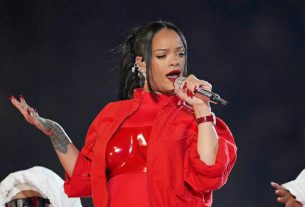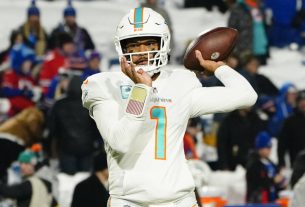Shortly after Ryan Shazier’s injury during Monday’s Steelers-Bengals game, I got a message from Tim Marchman. The NFL has that manipulative injury music, he posited, referring to the sad piano song that they play going into commercial breaks as a player is carted off the field. Doesn’t WWE have their own version for storylines that they demand the fans react to with shock and sadness? They do, as it turns out. It’s one that traces back to a genuine tragedy.
The most traumatic wrestling-watching experience of most long-time fans’ lives happened on May 23, 1999. That was the night that Owen Hart died in an accidental fall from the rafters of Kemper Arena in Kansas City during WWE’s second annual “Over the Edge” pay-per-view event. Set to be lowered to the ring in a harness, the quick release mechanism on the rigging—the presence of which later became one of the key points in multiple lawsuits—was somehow activated prematurely, and Hart fell onto one of the corners of the ring, narrowly missing referee Jim Korderas. Live, in Kansas City, not all of the fans saw what happened because the lights had been turned down; the pay-per-view broadcast was showing a pre-recorded segment. The lights were up as paramedics tried to revive Hart, and fans in attendance did see that happening. Those watching at home saw the announcers and later crowd shots. When the call was made to continue the show, everyone saw a sagging, broken wrestling ring with a blood stain in the corner. Announcers Jim Ross and Jerry Lawler sounded, quite naturally, like people who had just seen someone die.
During the break, Ross and Lawler told fans watching at home what had happened, and later jumped in again to announce that Hart had been pronounced dead; the fans in attendance didn’t get such an update. After a tribute show the next night and the recording of the following week’s show the night after that, it was back to normal for the promotion, which would soon be hit by a wrongful death lawsuit.
Somehow, for no other reason than that this is pro wrestling, the biggest lasting legacy of Over The Edge ‘99 on the WWE product was not anything like improvements in wrestler safety. Instead, it was the flat, monotone affect that Ross and Lawler—the latter of whom ran to the ring to help the paramedics and basically watched Hart die in his arms—naturally adopted after watching their friend fall to his death. Dubbed “the Owen voice” or “the Owen Hart voice” by internet-savvy fans, it became an inherent characteristic of injury angles that were supposed to be treated more seriously than the norm. A human response to a human tragedy soon became part of the show.
While the overt connections to Owen Hart’s death have been muddied over time, the first time that “the Owen voice” was used was clearly meant to evoke the biggest tragedy in company history. This was less than two years later at Royal Rumble 2001. Chyna, who had been selling a neck injury at the hands of the Right to Censor heel group (don’t ask), went for her trademark handspring elbow in the corner on Ivory. After it hit, she collapsed, seemingly making a point to avoid typical pro wrestling-style selling, and Ivory pinned her. Ross and Lawler, on the call, both got quiet, whispering things like “she’s not moving,” “my God,” and “oh no,” seemingly emulating their tone after Hart’s fall. If the connection wasn’t clear enough, Lawler quickly ran to the ring to direct traffic and wave over paramedics. As Chyna was stretchered out, he returned to the announcers’ desk, where he sounded like he was fighting back tears as he said Chyna couldn’t even talk in the ring.
Amazingly enough, the first Google result for “Chyna Ivory injury” without quotes is a message board thread from that night debating if the connection was intentional, with some pointing to Lawler’s involvement as a deciding factor. As the years went on, this became more and more rote. It wasn’t quite the note for note copy that Lawler sold in Chyna’s case, but the announcers’ tone shifting to indicate that you were seeing “a real injury” became a semi-regular occurrence.
It’s worth noting that this is not how wrestling announcers always acted, least of all in WWE. In February 1998, when WWE did another “this is more real than what you usually see” type of injury, this time with the New Age Outlaws taking out Cactus Jack and Terry Funk, the announcers maintained their usual volume while expressing indignation at the heels’ actions. Sure, Sunny is out there crying, and Vince McMahon—then no longer an announcer but not yet a weekly fixture in his evil boss character—made an appearance, too, but this was still clearly a wrestling storyline. It just had some different trappings.
WWE’s biggest rival, WCW, routinely pushed the bounds of good taste months before the Chyna-Ivory match. At the 2000 edition of Slamboree, the promotion’s annual May pay-per-view, they did an injury angle featuring Chris Kanyon suffering a great fall from the top of a steel cage onto the entrance ramp. This was not only two weeks short of the first anniversary of Hart’s death, although it was that, but it was also at Kemper Arena. While WCW subjected many of the same fans who had witnessed Owen Hart’s death to this idiotic and gratuitous riff on it, announcers Tony Schiavone, Scott Hudson, and Mark Madden simply carried on sounding like wrestling announcers in calling the action.
In other words, “the Owen voice” did not exist as a thing announcers could go to until the Chyna vs. Ivory match in January 2001.
As noted back in June, WWE took this to its logical extreme in 2007, where McMahon’s “Mr. McMahon” character was killed off in a limousine explosion on a show that featured liberal usage of the “Owen voice” and, somehow, the TV return of Owen’s brother, Bret Hart. In the following week, WWE programming was filled with lavish tributes to Mr. McMahon, all done in the exact same style as not just the Hart memorial show, but also tribute shows after 9/11 and the death of Eddie Guerrero. It was convincing enough that Donald Trump, then just a fringe player in the WWE universe, called McMahon’s office in the belief that he had really died. A device that had explicitly been used for real feelings about real deaths was suddenly a comedic device, which made it a lot harder for WWE to publicly deal with Chris Benoit killing his wife and son days later.
Pro wrestling is all about manipulating emotions, and that’s OK. That’s part of the fun of it. But it’s one thing to manipulate them in the context of a fantasy world of good vs. evil. It’s another issue entirely to invoke real deaths to manipulate emotions about made-up injuries. Sure, WWE announcers explicitly say some variation of “this is not part of the show” when there is a real tragedy, as with Jerry Lawler’s heart attack live on Monday Night Raw. That doesn’t make the more routine and significantly more crass attempts at bending reality any easier to take, or excuse.



